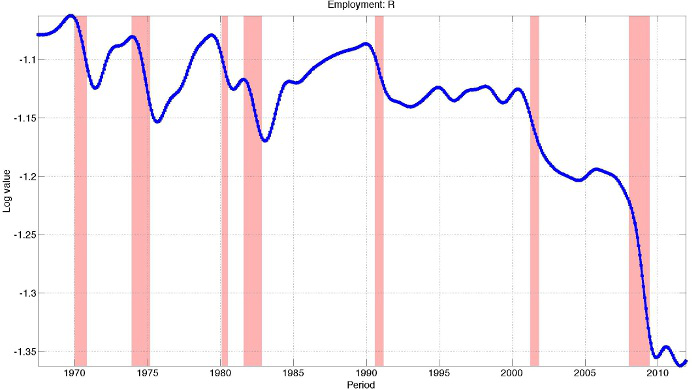Can there be a middle class if there are no middle class jobs?
If there was one term we heard more than any other here in the USA during the recent Presidential election contest it had to be 'middle class.'
The 'middle class', sometimes depending on what group is doing the defining, consists of that large swath of average, normal, or 'regular' people - neither rich nor in poverty, and that have typically worked in a wide range of jobs that provided solid but not spectacular earnings, some potential for growth, were fairly stable, and crucially, were generally accessible to just about everyone who was willing to put in the effort.
In the election both sides talked a lot about the middle class, mostly coupled with words like 'save', 'strengthen', or 'protect'. While the opposition parties advanced different proposals and philosophies that they felt would be in the best interests of the middle class, there was at least consensus across the board that the welfare of the middle class is of significant importance to the health of the nation overall.
But no matter what political philosophy you take up with, one emerging reality about the overall job market seems to be this - that the recovery from the 2009 recession, (such as it is), has not extended to many of these 'middle class' type jobs.
The below chart showing how 'routine' job levels have been impacted by recent economic recessions is from a piece by Economics professors Henry Siu and Nir Jaimovich titled 'Jobless recoveries and the disappearance of routine occupations' that paints a really grim future for the middle class and many of the professions that have typically been held by middle class workers.
Take a look at the data, with some additional comments/analysis to follow.

From the author's analysis of the data in the above chart:
Figure 1 highlights our simple point; it plots per capita employment in routine occupations (in log levels) from 1967 to the end of 2011. Since about 1990, there is an obvious 28 log point decline in routine employment.
What is equally clear is that this fall has not happened gradually over time but that the decline is concentrated in economic downturns. 92% of the 28 log point fall occurred within a 12 month window of NBER-dated recessions
Equally important to identifying the dramatic loss of these historically middle class 'routine' jobs is the researcher's conclusion that once lost, these jobs do not ever come back - as firms elect to offshore, automate, or increase technology investments to maintain overall output using a reduced number of employees.
Jobs on the 'high end' like software engineers, analysts, and economists, (lucky for the authors, I guess), as well as ones on the lower income levels like in retail and hospitality, have shown to be resilient, and nearly recession-proof. But the 'middle' and by extension the middle class - well not so much.
Last, I will leave with this conclusion from the piece, about where long-term job growth has occurred, and where it hasn't:
Thus, all of the per capita employment growth of the past 30 years has either been in ‘non-routine’ occupations located at the high-end of the wage distribution, such as software engineers and economists, or in low-paying jobs, such as service occupations like restaurant waiters and janitors. For this last set of occupations, this has been especially true in the past decade.
A conclusion, if indeed accurate, (and it seems to be), that makes the recent blustering and posturing in the election about 'saving' the middle class, which mainly consisted of arguments over a point or two difference in marginal tax rates and simply calling the other guy 'wrong', a demonstration of a deep lack of understanding, or willful ignorance of the realities in the job market and the economy.
Saving the middle class is going to be a much more complex and difficult task, no matter which side wins elections.
And yes, this a kind of downer post for a Friday - you have to cut me some slack, I may have just eaten my last Twinkie.
Have a great weekend!

 Steve
Steve
Reader Comments